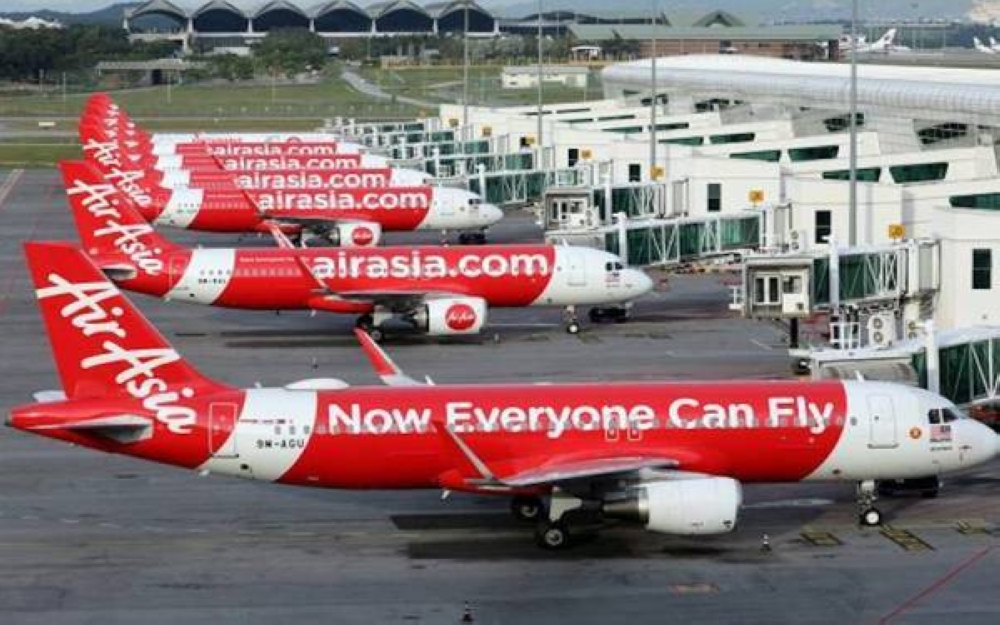AirAsia: 75 aircraft back in action

SHAH ALAM - After two years of being hit by the Covid-19 pandemic, the airline industry is finally recovering where 75 aircraft owned by AirAsia group operate at full capacity following the reopening of the country’s borders last April.
AirAsia Malaysia Chief Executive Officer Riad Asmat said for AirAsia Malaysia, 36 aeroplanes had started flying in the first quarter of 2022 to 44 domestic destinations.
The number of aircraft was expected to increase in May and second quarters this year.
"In the first quarter this year, AirAsia Malaysia (flight code AK) operated 36 planes compared to 14 planes in the same quarter last year.
"The rest of our planes are currently in maintenance and (operations are) expected to return to the pre-Covid state by the end of the year.
“AirAsia will operate 909 weekly flights to 44 domestic destinations in May. This represents 78 per cent of the pre-pandemic weekly flight frequency over the same period.
"For international flights, we will operate 32 routes in 12 countries.
“More routes and frequencies will be added as travel demand increases in tandem with the reopening of the destination soon,” he told Sinar Premium.
Riad added that with travel restrictions getting looser, AirAsia had increased its domestic flight capacity by 156 per cent since October 2021 which began with Langkawi’s travel bubble, while the capacity for international flights increased by 50 per cent since opening re-border this April.
“For AirAsia Malaysia, the number of passengers and capacity increased to 464 per cent and 455 per cent respectively, compared to the same quarter of the year following reconnections of domestic flights
“This includes the launch of domestic routes to connect people between intercity especially during the festive season,” he said.
Aside from that, flight reservations had also increased by 20 per cent in the first quarter of this year following air travel recovery especially for domestic travel.
“Among the popular destinations are from Kuala Lumpur to Kota Bharu, Kuala Terengganu, Kuching, Langkawi and Kota Kinabalu.
“The number of passengers also increased by 464 per cent with a total of 2,807,892 passengers recorded in January to March this year compared to 497,742 passengers in the same period last year, "he said.
Riad said that despite the pandemic affecting the aviation sector worldwide, AirAsia took advantage of the travel restriction period to upgrade and renew flight procedures for the safety and well-being of guests and staff.
“In preparation for borders reopening, AirAsia Malaysia has reactivated 45 per cent of its pilots and 11 per cent of its cabin crew who were affected by the pandemic. We will continue to reactivate more flight crews in the coming months as we increase flight capacity,” he said.
On allegations of a 10 to 20 per cent increase in flight ticket prices during the festive season, Riad said AirAsia fares were generally based on a dynamic pricing model based on supply and demand.
"In general, the price fares will increase as it gets closer to the travel date and during peak times such as festive season.
“AirAsia still maintains the lowest fare in the market despite facing various challenges such as capacity constraints, increased aircraft maintenance costs resulting from supply chain disruptions and rising aircraft fuel prices, which have exceeded USD120 per barrel or over 160 per cent compared to the year 2015.
In addition, AirAsia expected revenue from its digital transformation company that could contribute 50 per cent to the group’s revenue in the upcoming five years.
“During the pandemic period, AirAsia has successfully completed its digital transformation by restructuring a low-cost airline covering a wide range of services other digital include e-hailing, food delivery, e-commerce, financial technology, cargo and logistics as well as others.
"Our biggest hope is for the national aviation sector to recover as soon as possible and return a positive outlook to over industries affected by Covid-19,” he said.














